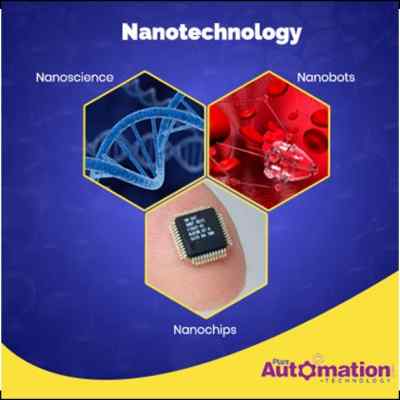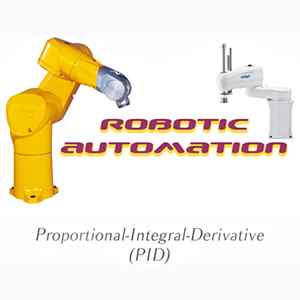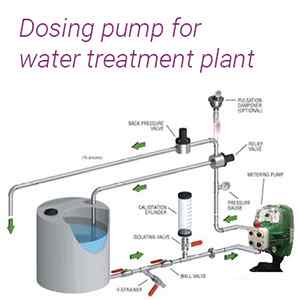Industrial Nanotechnology - The Major Revolutionizer of the Fourth Industrial Revolution

Nanotechnology deals with the creation of materials, devices and systems through engineering the matter at the nanometer length scale. The outcome itself does not have to be nanoscale but can be micro or macro size.
Arising the nanometer length scale in the novel property is a very critical process through which it would be able to manipulate and control individual atoms and molecules. At this point, physical, chemical, mechanical, electrical, optical, magnetic and other properties change, making use of such changes developing novel products and processes which have not been possible hitherto.
Why is nanotechnology important?
Nanotechnology is helping to improve, even revolutionize, many technologies in industry sectors like information technology, medicine, transportation, energy, food safety, and environmental science, and many others.
Nature developed Nanotechnology over billions of years ago produced enzymes and catalysts to organize with exquisite precision various kinds of atoms and molecules into complex microscopic structures which made life possible. They are built with great efficiency having impressive capabilities of storing and processing massive amounts of data using large arrays of nerve cells, billions of bits of data stored in molecules of deoxyribonucleic acid(DNA).
How does Industrial Nanotechnology Work?
Definition: Nanotechnology is the engineering of functional atoms at the molecular scale.

Nanoparticle
- A solid particle in the 1-100 nanometer range that could be noncrystalline, an aggregate of crystallites or a single crystallite is also known as Nanoparticle.
- One nanometer is meted as a billionth part of a meter.
- More than 20 years of basic nanoscience research and more than fifteen years of strong-strong R&D under the NNI(National Nanotechnology Initiative), revealed Nanotechnology is used in both metamorphic ways.
- Microscopes that help to see the atoms are scanning tunneling microscope (STM) and atomic force microscope (AFM), which stands as the primary weapons in nanotechnology.
INDUSTRIAL APPLICATIONS OF NANOTECHNOLOGY
Here are the industrial nanotechnology applications:
Medicine
Nanotechnology in medicine is currently on the development stream. It involves nanoparticles to deliver drugs, light, heat or other substances to specific cells, such as cancer cells. The diseased cells are attracted to the particles where they directly treat them. Reducing the damage to healthy cells and earlier detection of disease are best features of this technique.
Electronics
Nanotechnology in electronics is expanding the capabilities of electronic devices. It includes improving display screens on devices, increasing the density of memory chips and also reducing the weight and power consumption. The size of the transistors used in integrated circuits can be reduced using nanotechnology.
Environment
Nanotechnology is being used in several applications to improve the environment.
- Cleaning up organic chemicals polluting groundwater. Researchers have shown that iron nanoparticles can be effective in cleaning up organic solvents that are polluting groundwater. The iron nanoparticles disperse throughout the body of water and decompose the organic solvent in place. This method can be more effective and cost significantly less than treatment methods that require the water to be pumped out of the ground.
- Generating less pollution during the production of materials. Researchers have demonstrated that the use of silver nanoclusters as catalysts can significantly reduce the polluting by-products generated in the production of materials such as plastics, paints, detergents and brake fluids.
- Increasing the current generated by windmills. Epoxy-containing carbon nanotubes are being used in making windmill blades. The resulting blades are stronger and lower weight, and therefore the voltage of electricity generated by each windmill is greater.
- Researchers have demonstrated that an array of silicon nanowires embedded in a polymer, results in low-cost but high-efficiency solar cells. This may result in solar cells that generate electricity as cost-effectively as coal or oil.
Consumer Products
Nanotechnology included in a numerous ways to serve the daily basic needs that used
- The silver nanoparticles in textiles used to kill the bacteria in the fabric and making the cloth odour-resistant.
- Delivering vitamins deeper into the skin
- Lithium ion batteries that use nanoparticles-based electrodes are used in battery electrical vehicles.
Sporting Goods
Nanotechnology in sports include:
- Increasing the strength of the tennis racquets by adding nanotubes to the frames which increase the power and handling control of the ball.
- Nanoparticles improves the uniformity in the shaft material which improves the swing.
Aerospace industry
- Light weight and stronger materials will be used in aircraft manufacturing. Leading to increased performance with reduced fuel consumption.
Future of Nanotechnology
Present products are much more ordinary nanotechnology used in plastics for the body of bicycles, cosmetics, better clothes, healthcare products and tennis rackets reinforced with carbon nanotubes.
But, According to a debate the futuristic development of Nanotechnology has both shades. Nanotechnology is a subject of many scientific and non-scientific speculations it is a board term that covers many areas of science, research and technology. The fear of many is the cultural prediction that self-replicating nanoparticles taking part in massive assaults on humanity and the environment would bring the doomsday. The development of Weapons using nanotechnology would bring a mass scourge and deluge.
On the other hand, we have a hidden weapon called nanobot envisioned use of nanoparticles inside the body and the bloodstream making repairs and guarding against infection.









